-
 Bitcoin
Bitcoin $113900
-1.39% -
 Ethereum
Ethereum $3517
-4.15% -
 XRP
XRP $3.009
1.59% -
 Tether USDt
Tether USDt $0.9997
-0.04% -
 BNB
BNB $766.8
-1.41% -
 Solana
Solana $164.6
-2.38% -
 USDC
USDC $0.9998
-0.02% -
 TRON
TRON $0.3277
0.65% -
 Dogecoin
Dogecoin $0.2023
-1.67% -
 Cardano
Cardano $0.7246
0.05% -
 Hyperliquid
Hyperliquid $38.27
-4.77% -
 Sui
Sui $3.528
-0.52% -
 Stellar
Stellar $0.3890
-0.73% -
 Chainlink
Chainlink $16.16
-2.69% -
 Bitcoin Cash
Bitcoin Cash $539.9
-4.38% -
 Hedera
Hedera $0.2425
-2.00% -
 Avalanche
Avalanche $21.71
-0.97% -
 Toncoin
Toncoin $3.662
5.73% -
 Ethena USDe
Ethena USDe $1.000
-0.02% -
 UNUS SED LEO
UNUS SED LEO $8.964
0.35% -
 Litecoin
Litecoin $107.7
2.33% -
 Shiba Inu
Shiba Inu $0.00001223
-0.40% -
 Polkadot
Polkadot $3.617
-0.97% -
 Uniswap
Uniswap $9.052
-2.49% -
 Monero
Monero $295.1
-3.79% -
 Dai
Dai $0.9999
0.00% -
 Bitget Token
Bitget Token $4.315
-1.85% -
 Pepe
Pepe $0.00001060
0.11% -
 Cronos
Cronos $0.1342
-2.72% -
 Aave
Aave $256.0
-0.87%
How to back up the private key of SafePal S1?
SafePal S1 doesn't allow direct private key backup; use the seed phrase backup method instead, and store it securely to protect your crypto assets.
Mar 28, 2025 at 06:00 am
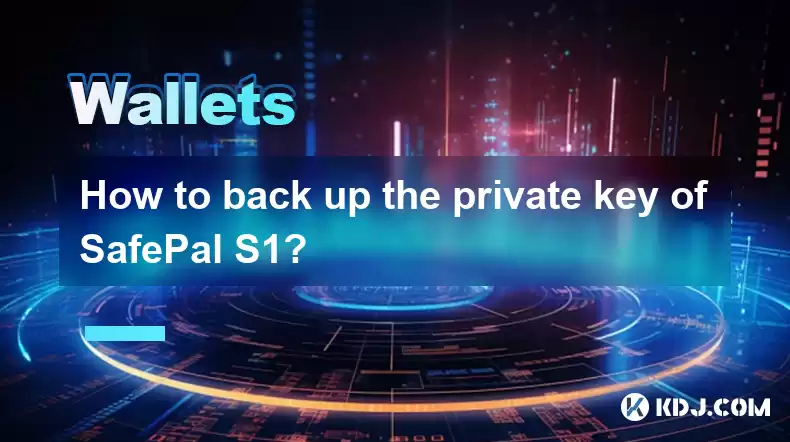
Understanding SafePal S1 and Private Key Security
The SafePal S1 is a hardware wallet designed to secure your crypto assets. Its security relies heavily on the private key, a secret code that gives you sole control over your cryptocurrency holdings. Losing your private key means losing access to your funds – irrevocably. Therefore, backing it up correctly is paramount. This process differs significantly from backing up your seed phrase, which is used to restore your wallet's contents. This article focuses solely on backing up your private key. Note that the process described below applies specifically to the SafePal S1 and might vary for other hardware wallets.
Direct Private Key Backup: A Misconception
It's crucial to understand that the SafePal S1, like most reputable hardware wallets, does not directly offer a method to export or back up your private key. This is a deliberate security measure. Direct access to the private key increases the risk of theft or loss. Any method claiming to directly provide your private key should be treated with extreme suspicion and is likely a scam.
What SafePal S1 Does Offer: Seed Phrase Backup
The SafePal S1 provides a backup mechanism, but it's not a direct private key backup. Instead, it allows you to back up your seed phrase (recovery phrase). This 12-24 word phrase acts as a master key, allowing you to recover your entire wallet and all its associated private keys should your device be lost or damaged. This seed phrase is the primary method of recovery.
Backing Up Your SafePal S1 Seed Phrase: A Step-by-Step Guide
- Power on your SafePal S1: Ensure the device is fully charged.
- Navigate to the Backup Menu: This is usually found in the settings section of your wallet's interface. The exact location may vary slightly depending on the firmware version.
- Initiate the Backup Process: Follow the on-screen prompts carefully. You will be asked to confirm your intention to back up your seed phrase.
- Write Down Your Seed Phrase: The device will display your seed phrase one word at a time. Write each word down meticulously on a piece of paper, ensuring accuracy. Use a pen and paper; do not use digital means.
- Verify the Seed Phrase: After writing down all the words, the device will likely ask you to verify some of the words to confirm accuracy.
- Securely Store Your Seed Phrase: Once the backup is complete, store your seed phrase in a safe, secure location, away from your device. Consider using a fireproof and waterproof safe.
Understanding the Implications of Losing Your Seed Phrase
Losing your seed phrase means losing access to all the cryptocurrencies stored in your SafePal S1. There is no recovery process without the seed phrase. This is why securely storing your seed phrase is the most critical step in safeguarding your assets.
Alternatives and Misconceptions
Some individuals may suggest using third-party software or online services to "extract" or "backup" your private keys. These methods are highly risky and should be avoided. They often lead to scams, malware infections, or the loss of your funds. Trust only the official SafePal app and your SafePal S1 device for managing your wallet.
Protecting Your SafePal S1: Additional Security Measures
Beyond backing up your seed phrase, consider these additional security measures:
- Strong Passcode: Set a strong, unique passcode for your SafePal S1.
- Regular Firmware Updates: Keep your SafePal S1's firmware updated to benefit from the latest security patches.
- Physical Security: Protect your device from physical theft or damage.
Frequently Asked Questions
Q: Can I back up my SafePal S1 private key directly?
A: No, SafePal S1 does not allow direct private key backup. This is a security feature to prevent unauthorized access to your funds. The only backup method is via the seed phrase.
Q: What happens if I lose my SafePal S1 and my seed phrase?
A: If you lose both your device and your seed phrase, your cryptocurrency is irretrievably lost. There is no way to recover it.
Q: Is it safe to store my seed phrase digitally?
A: No, storing your seed phrase digitally is extremely risky. It is vulnerable to hacking, malware, and data loss. Always use pen and paper.
Q: What if I suspect my SafePal S1 has been compromised?
A: Immediately change your passcode and contact SafePal support. Consider generating a new seed phrase and transferring your assets to a new, secure wallet.
Q: Can I use a third-party app to manage my SafePal S1?
A: While some third-party apps might claim compatibility, it's strongly recommended to only use the official SafePal app to interact with your SafePal S1 to avoid security risks.
Disclaimer:info@kdj.com
The information provided is not trading advice. kdj.com does not assume any responsibility for any investments made based on the information provided in this article. Cryptocurrencies are highly volatile and it is highly recommended that you invest with caution after thorough research!
If you believe that the content used on this website infringes your copyright, please contact us immediately (info@kdj.com) and we will delete it promptly.
- DeFi Token Summer Gains: Is Mutuum Finance the Real Deal?
- 2025-08-02 18:30:12
- Bitcoin, Realized Price, and the Top: Are We There Yet?
- 2025-08-02 18:30:12
- Dogwifhat (WIF) Rally: Will the Meme Coin Bite Back?
- 2025-08-02 19:10:12
- PayFi Heats Up: Tron's AMA Recap & TRX's Bullish Nasdaq Debut
- 2025-08-02 19:10:12
- ARK Invest, Coinbase, and BitMine: Decoding the Crypto Investment Shuffle
- 2025-08-02 19:15:23
- JasmyCoin Under Pressure: Bears Grip Tight, Testing Lower Support
- 2025-08-02 19:15:23
Related knowledge
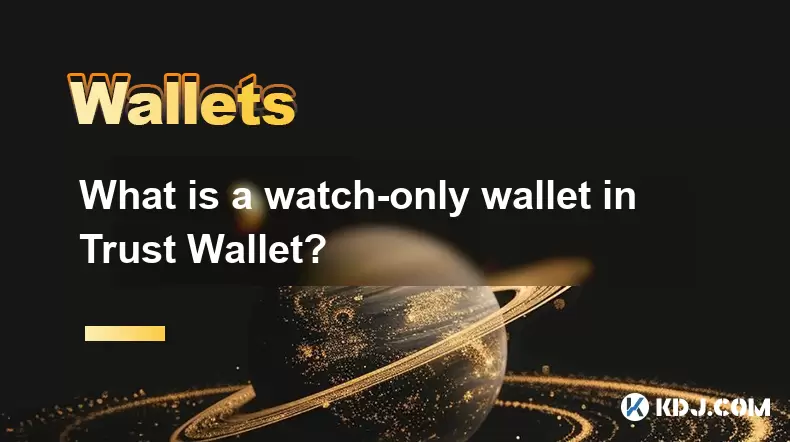
What is a watch-only wallet in Trust Wallet?
Aug 02,2025 at 03:36am
Understanding the Concept of a Watch-Only WalletA watch-only wallet in Trust Wallet allows users to monitor a cryptocurrency address without having ac...
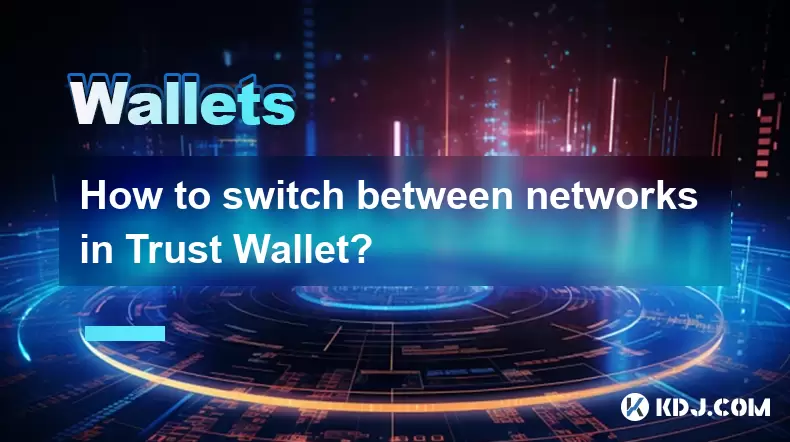
How to switch between networks in Trust Wallet?
Aug 02,2025 at 12:36pm
Understanding Network Switching in Trust WalletSwitching between networks in Trust Wallet allows users to manage assets across different blockchains s...
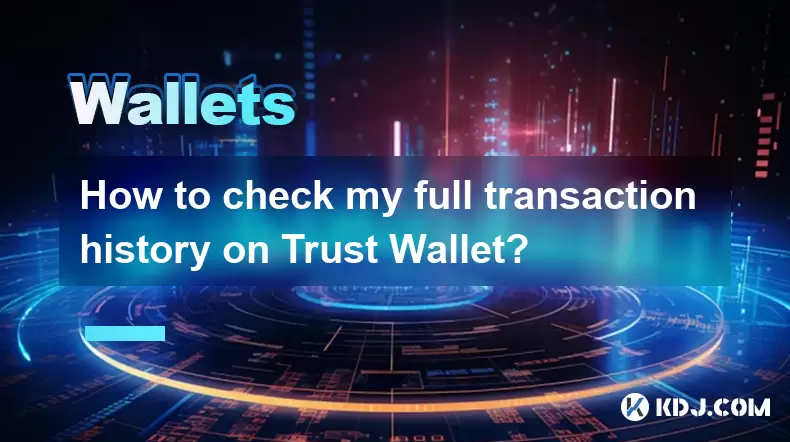
How to check my full transaction history on Trust Wallet?
Aug 02,2025 at 09:24am
Understanding Transaction History in Trust WalletTrust Wallet is a widely used non-custodial cryptocurrency wallet that supports a broad range of bloc...
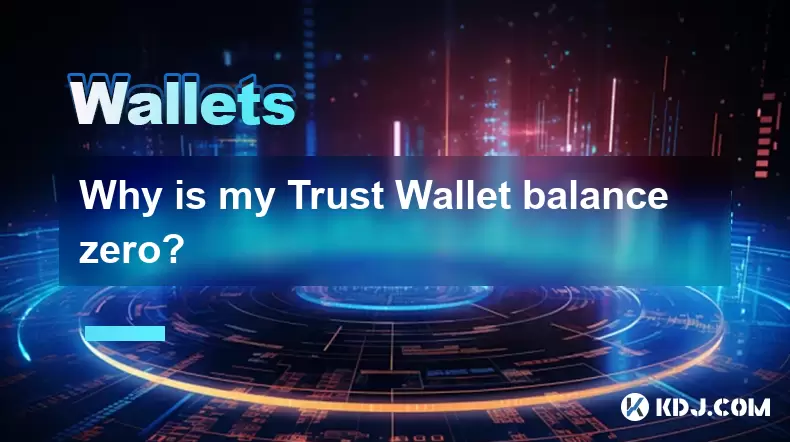
Why is my Trust Wallet balance zero?
Aug 02,2025 at 03:49am
Understanding Trust Wallet Balance Display IssuesIf you're seeing a zero balance in your Trust Wallet despite knowing you've previously received or se...
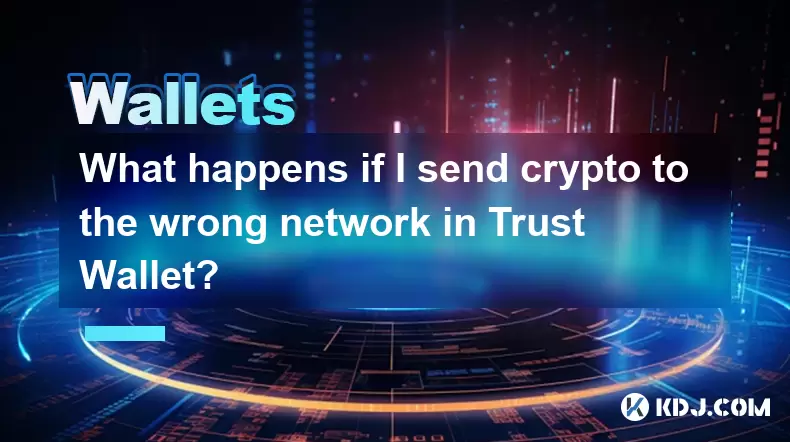
What happens if I send crypto to the wrong network in Trust Wallet?
Aug 02,2025 at 07:22pm
Understanding Network Compatibility in Trust WalletWhen using Trust Wallet, it's essential to understand that different cryptocurrencies operate on di...
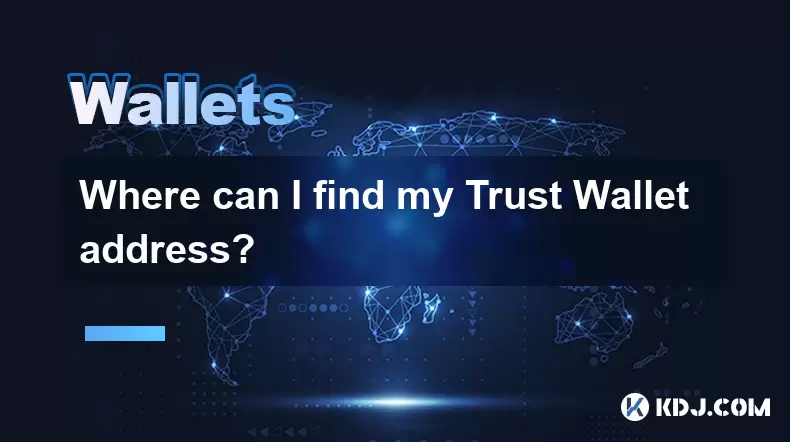
Where can I find my Trust Wallet address?
Aug 02,2025 at 06:07pm
Understanding Your Trust Wallet AddressYour Trust Wallet address is a unique identifier that allows others to send you cryptocurrency. It is a string ...

What is a watch-only wallet in Trust Wallet?
Aug 02,2025 at 03:36am
Understanding the Concept of a Watch-Only WalletA watch-only wallet in Trust Wallet allows users to monitor a cryptocurrency address without having ac...

How to switch between networks in Trust Wallet?
Aug 02,2025 at 12:36pm
Understanding Network Switching in Trust WalletSwitching between networks in Trust Wallet allows users to manage assets across different blockchains s...

How to check my full transaction history on Trust Wallet?
Aug 02,2025 at 09:24am
Understanding Transaction History in Trust WalletTrust Wallet is a widely used non-custodial cryptocurrency wallet that supports a broad range of bloc...

Why is my Trust Wallet balance zero?
Aug 02,2025 at 03:49am
Understanding Trust Wallet Balance Display IssuesIf you're seeing a zero balance in your Trust Wallet despite knowing you've previously received or se...

What happens if I send crypto to the wrong network in Trust Wallet?
Aug 02,2025 at 07:22pm
Understanding Network Compatibility in Trust WalletWhen using Trust Wallet, it's essential to understand that different cryptocurrencies operate on di...

Where can I find my Trust Wallet address?
Aug 02,2025 at 06:07pm
Understanding Your Trust Wallet AddressYour Trust Wallet address is a unique identifier that allows others to send you cryptocurrency. It is a string ...
See all articles

























































































